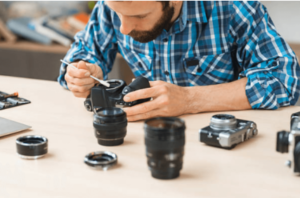How to Start a Photography Portfolio?
Creating a photography portfolio is an essential step for any aspiring or professional photographer. It showcases your best work, demonstrates your skills, and helps you attract potential clients or job opportunities. Here’s a comprehensive guide to starting a photography portfolio that stands out.
1. Introduction
Starting a photography portfolio can seem daunting, but it’s a crucial step in building your career. Whether you’re a budding photographer or looking to refresh your existing portfolio, this guide will help you create an impressive showcase of your work.
2. Understanding the Importance of a Photography Portfolio
A photography portfolio is more than just a collection of photos; it’s a visual resume that highlights your unique style and technical skills. It allows potential clients and employers to assess your capabilities and creativity.
3. Deciding on the Type of Portfolio
Before you start compiling your work, decide on the type of portfolio you need. Are you aiming for a digital portfolio, a print portfolio, or both? Each type has its advantages depending on your audience and how you plan to use it.
4. Selecting Your Best Work
Choose only your best and most relevant work. Quality trumps quantity, so be selective. Include a variety of images that showcase your versatility and skill in different areas of photography.
5. Organizing Your Portfolio
Organize your photos in a logical and visually appealing manner. Group similar styles or themes together to create a cohesive flow. The organization should tell a story and make it easy for viewers to navigate through your work.
6. Choosing the Right Format
6.1. Online Portfolio
An online portfolio is accessible to a global audience and can be easily updated. It’s an essential tool for modern photographers.
6.2. Print Portfolio
A print portfolio is tangible and can make a strong impression during in-person meetings and interviews. It’s a great way to showcase the quality of your prints.
7. Building an Online Portfolio
7.1. Choosing a Platform
Select a platform that suits your needs. Popular options include Squarespace, Wix, and Adobe Portfolio. Ensure the platform offers customization options and is user-friendly.
7.2. Designing Your Website
Design a clean, professional-looking website. Use high-quality images, and ensure your website is easy to navigate. A good design can enhance the presentation of your work.
7.3. SEO Optimization
Optimize your website for search engines. Use relevant keywords, create descriptive titles and tags, and ensure your website loads quickly. This will help potential clients find your portfolio online.
8. Creating a Print Portfolio
8.1. Selecting High-Quality Prints
Choose a reputable printing service to produce high-quality prints. The quality of the prints should reflect the quality of your work.
8.2. Assembling the Portfolio Book
Invest in a professional-looking portfolio book. Organize your prints in a way that tells a story and is easy to flip through during presentations.
9. Crafting a Strong Portfolio Introduction
Write a compelling introduction that tells your story, explains your passion for photography, and gives context to your work. Keep it concise and engaging.
10. Writing Effective Photo Descriptions
Include brief descriptions for each photo. Explain the context, techniques used, and any interesting details about the shot. This adds depth to your portfolio.
11. Updating Your Portfolio Regularly
Regularly update your portfolio with new work to keep it fresh and relevant. Remove older work that no longer represents your current style or skill level.
12. Promoting Your Portfolio
12.1. Social Media
Leverage social media platforms to share your portfolio. Use Instagram, Facebook, and Twitter to reach a wider audience and engage with potential clients.
12.2. Networking and Events
Attend networking events, exhibitions, and photography meetups. Carry your print portfolio and business cards to make connections and showcase your work in person.
13. Seeking Feedback and Making Improvements
Seek feedback from peers, mentors, and potential clients. Use their input to improve your portfolio. Continuous improvement is key to staying relevant.
14. Common Mistakes to Avoid
Avoid common pitfalls such as including too many photos, using inconsistent styles, or neglecting to update your portfolio. Keep your portfolio focused and professional.
For more advanced photography techniques, including how to manage your equipment, you might be interested in our detailed article on How Does a DSLR Camera Adjust Its Lens to Focus on Different Distances?. Understanding how your camera works can significantly improve the quality of your photos and, consequently, your portfolio.
RELATED POSTS

Understanding Different File Types and Their Impact on Memory Card Storage

How Can You Fix Focus Issues in a Camera Lens That Consistently Produces Soft or Blurry Images?

How Photographers Can Optimize Their Use of Multifunctional Control Dials for Faster Adjustments ?


2 thoughts on “How to Start a Photography Portfolio ?”